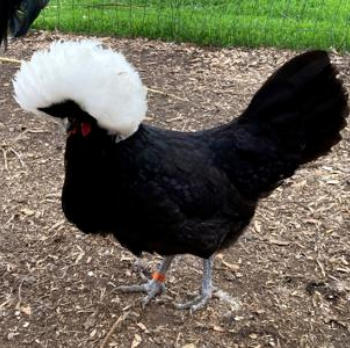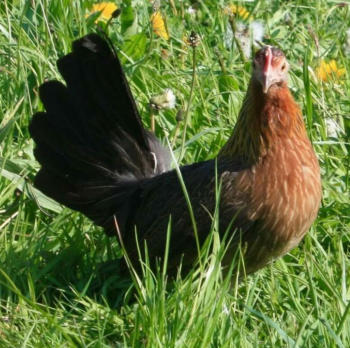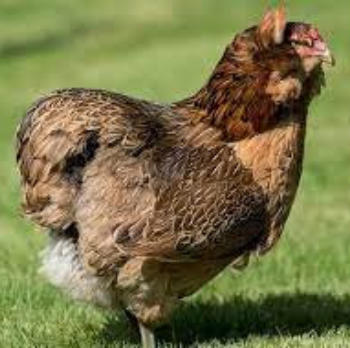© Suffolk and Norfolk Chickens 2025 - Website designed and built by DataTech D.T.P.


Chicken vaccinations
Please note, all our chicks go through a vaccination programme. For more information, please click here.
Integrating hens to an existing flock
First and foremost NEVER try to integrate a single hen to an existing flock! This will only end in disaster. We suggest at least two at a time, but preferably three. Make sure that the new arrivals are of an age that can stick up for themselves ie; 18 weeks or more. The best tip for this is patience. Try to set up a separate pen next to the existing run or if space is an issue divide the run off giving the new arrivals some space where the birds can see one another, but not get to each other (chicken wire across to divide them works well). Once they have been in their separate run for a week or so you can then try to introduce them. We recommend putting the new arrivals in at night directly into the existing ones coop and close the door (hens do not tend to fight in the coop when it is dark). In the morning let them out all at once and scatter some feed about in order to distract the older hens from the new arrivals. Secondly we suggest adding another feeder and drinker in the run as the older ones may try to protect their food source. Then as I said before keep an eye on the proceedings and be patient. Please be aware there will be pecking as this is establishing a new pecking order, this is normal behaviour in chickens. This should stop after a week or so, but can continue for a few weeks. If blood is drawn which can sometimes happen you will need to separate them again for a while, But only if blood is drawn, not purely because there is fighting. You should find now that they are happy to mingle.

© Suffolk and Norfolk Chickens 2025 - Website designed and built by DataTech D.T.P.


Chicken vaccinations
Please note, all our chicks go through a vaccination programme. For more information, please click here.
Integrating hens to an existing
flock
First and foremost NEVER try to integrate a single hen to an existing flock! This will only end in disaster. We suggest at least two at a time, but preferably three. Make sure that the new arrivals are of an age that can stick up for themselves ie; 18 weeks or more. The best tip for this is patience. Try to set up a separate pen next to the existing run or if space is an issue divide the run off giving the new arrivals some space where the birds can see one another, but not get to each other (chicken wire across to divide them works well). Once they have been in their separate run for a week or so you can then try to introduce them. We recommend putting the new arrivals in at night directly into the existing ones coop and close the door (hens do not tend to fight in the coop when it is dark). In the morning let them out all at once and scatter some feed about in order to distract the older hens from the new arrivals. Secondly we suggest adding another feeder and drinker in the run as the older ones may try to protect their food source. Then as I said before keep an eye on the proceedings and be patient. Please be aware there will be pecking as this is establishing a new pecking order, this is normal behaviour in chickens. This should stop after a week or so, but can continue for a few weeks. If blood is drawn which can sometimes happen you will need to separate them again for a while, But only if blood is drawn, not purely because there is fighting. You should find now that they are happy to mingle.









































